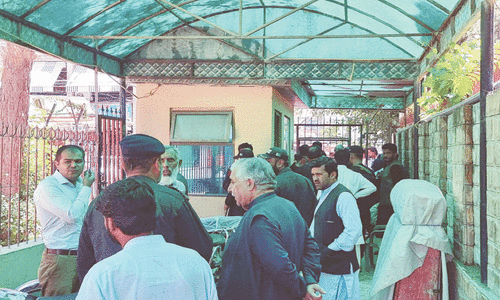The MQM’s return to the PPP-led government’s fold is certainly good news, especially for the people of Karachi/Sindh and for those patient and thoughtful enough to realise the grave consequences the fall of a government can have at this testing time. Whatever the realpolitik behind the manoeuvres of political parties may be, on an ideological level the current coalition government comprising the PPP, the ANP and the MQM is a natural union.
Today we stand in a very changed socio-political universe. These are not the 1990s (and certainly not the late 1970s) when secular democratic parties were at constant loggerheads, in the process shrinking their own space and losing much ground to the so-called anti-democratic forces and assorted political-religious parties. Thus, like it or not, there is no denying the fact that the PPP, MQM, ANP and PML-N remain our best bets if democracy and the concept of pluralism is to last in this troubled republic.
In our current state of pessimism one does tend to miss out certain bright spots lit by this government. Whatever has taken place in Pakistan in the last 35 years or so cannot be undone within a span of a single government term. The process gets even slower when popularly elected governments need to ignore or withdraw certain policies that might cost heavy economic losses, but at the same time somewhat boost the government’s populist credibility.
One of the most hopeful things that have emerged ever since this government took office three years ago is the unprecedented manner in which it has, in one way or the other, carried along a coalition of parties that until only ten years ago were not even willing to share a single table. And this was always the frustration felt by the secular side of democracy in Pakistan; parties spent more time bickering among themselves rather than addressing the issue of the ever-growing role and influence of the right in politics and society. Though this unprecedented coalition of Pakistan’s largest democratic parties has boldly swum through wave after wave of both real and projected crises, it can be suggested that moderate parties have to deliver more compared to their politico-religious counterparts who so far have only the emotional sides of the populace to appeal to.
Whereas the performance of the PPP-led coalition in regards to braving out (in a democratic manner) the terrible mess Pakistan has been in is certainly a noteworthy achievement, one cannot forget the role played in this respect by the opposition PML-N. Nevertheless, where there is enough grey matter to prove the Sharif brothers’ patient and pragmatic role in letting the democratic system regroup itself, there are also some questions to be asked of the PML-N.
The hawks in this party constantly betray the democracy-driven narrative the coalition government is trying to float. It is true that the electronic media has been this narrative’s biggest enemy (for both economic and populist reasons), but it seems the PML-N hawks contribute further bile to this damaging process by playing to a glued-to-TV gallery that is mostly made up of the urban middle class suspicions of democracy. It is as if the PML-N by doing this has already submitted to the perception that it is simply a large Punjab-based party with the province’s conservative business and trader classes being its main vote banks.
The PML-N’s rhetoric about governance, economic self-sufficiency and its rather vague stand on terrorism does not resound as convincingly with the people of Karachi and Sindh (and maybe even Balochistan), as it does with the middle-class of Punjab. This is not to suggest that people in the other provinces tend to ignore matters such as corruption and the need for good governance. The difference in this respect is of a cultural nature in which the said issues in Karachi and Sindh, for instance, are not seen from the staunchly neo-conservative lenses of the Punjab’s business and trader communities.
This is where the PPP succeeds. It speaks a more common language that can be related to by Pakistanis from across the board, even though sometimes its core message does get lost. However, this is also a language that the electronic media is highly suspicious of, because after all, the media too is using the same lenses in judging politics as does the PML-N; and thus the party enjoys a better relationship with the news channels. Just as the current ruling coalition comprises ideologically natural allies, so do the mainstream electronic media and the PML-N. The people can choose whose side they want to be on.








































